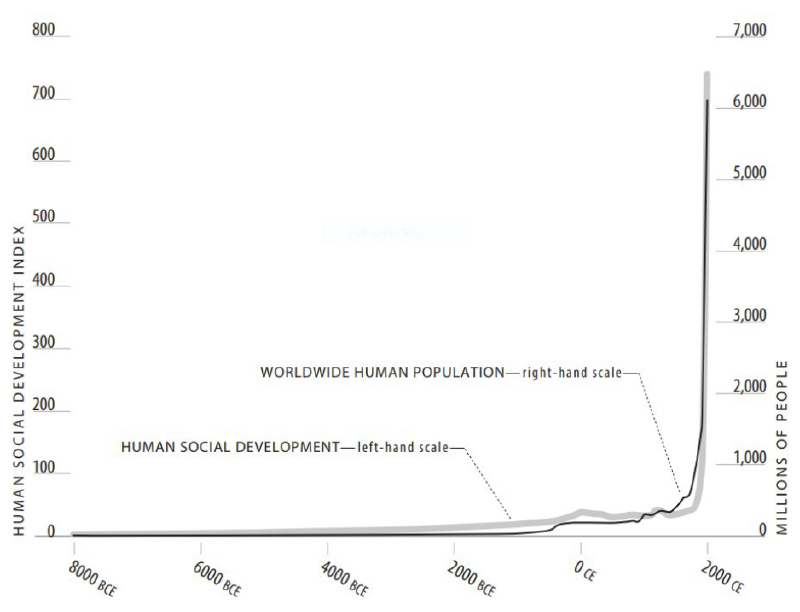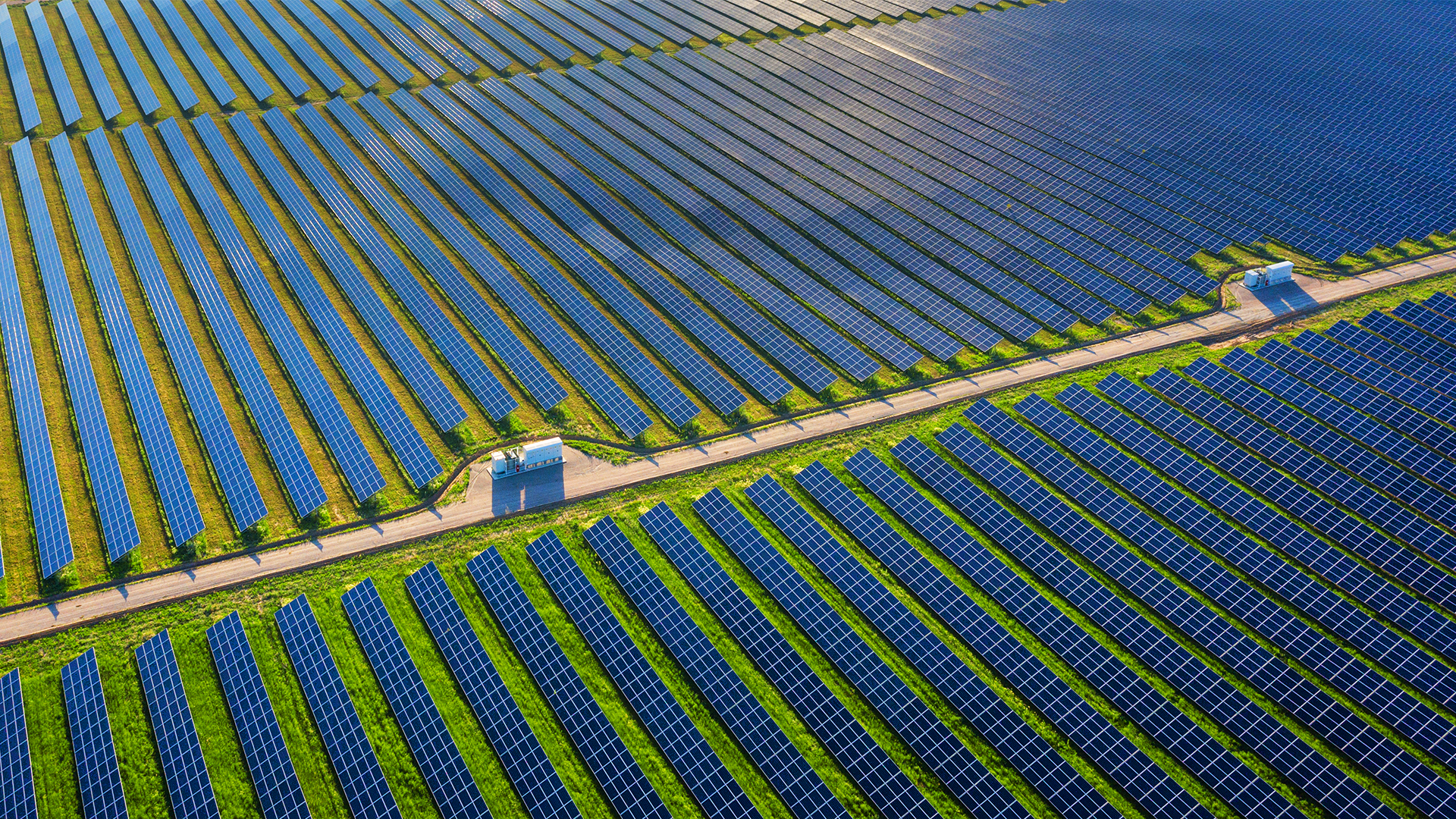Those with an interest in economic history will know the name Thomas Malthus. Malthus was a cleric at the turn of the 19th century who came up with the idea that rising food production, while it benefits the population, also leads to a rise in population that eventually cancels out those benefits.
The term “Malthusian trap” refers to the boom and bust scenario that this implies. Years of plenty, thanks to rising food production, are followed by years of famine and hardship because of rising populations, with the result that there is no true long-term improvement in the lives of humans overall, especially among the poor.
These days, Malthus is a figure of scorn for many. His observations were certainly true of the world up to that point, which had seen an ongoing cycle of feast and famine for thousands of years, with little to no long term gain in human wellbeing.
However the Malthusian trap started to lose its validity almost as soon as he had brought out the essay in which he proposed the idea, ‘An Essay on the Principle of Population’, released in 1798.
According to Andrew McAfee, writing in his book, ‘More From Less’, just about every indicator of human development, from life expectancy, to the percentage of the population living in poverty, to literacy, started to improve from 1800 in the West, and have continued to improve ever since.
McAfee quotes Ian Morris, a historian who has plotted human development over the millennia: “In 1776, Western social development had clawed its way up just forty-five points since Ice Age hunter-gatherers had prowled the tundra in search of a meal; within the next hundred years it soared another hundred points.”
These gains have accelerated and expanded beyond the West. After the index for the West rose 120 points in the 100 years to 1900, they added another 736 in the next 100 years. For the East, the gains were even more impressive – the index rose 2,300%.
Human development over the millennia

Image credit: The Second Machine Age by Erik Brynjolfson and Andrew McAfee
The Industrial Revolution
So how did Malthus get it so spectacularly wrong? Or rather, what happened to the world that Malthus had accurately described over the preceding millennia?
The simple answer is – the Industrial Revolution. Thanks to a series of technological advances, societies were able to produce more goods, more efficiently, and of constantly improving quality, and to distribute these same goods further and more efficiently to new markets around the world. These advances began in Britain, but then continued in Europe and North America and later in parts of Asia.
Steam engines, for example, allowed mass production and drove trains and ships. Later, electricity drove machines, lit up homes and allowed wide-ranging communications, while the internal combustion engine transformed transportation.
Advances in chemistry led to the rise of fertilisers, which revolutionised farming, improving crop yields and making food affordable to more and more people. Advances in medicine, such as anaesthetics and disinfectants, reduced death rates at the operating table. Advances in plumbing and sanitation reduced the incidence of waterborne pathogens like cholera and typhoid, which had been a regular threat to life up to that point.
The smallpox vaccine, the first of many vaccines that have improved our lives, arrived on the scene at around the same time as Malthus brought his book out.
The paradox of power
The list of life-improving technologies is long and keeps growing. But there’s one common thread to many of them – the harnessing of hydrocarbons as a source of power.
The engines of James Watt and others in the late 18th century were powered by coal, an abundant source of fuel at the time. They drove the spinning jennies that made affordable clothing, as well as other industrial equipment, and then the steam trains that allowed goods and people to travel further. They even helped pump water out of the coal mines, allowing even more coal to be extracted.
Later, coal fires powered the turbines that brought electricity into homes and factories. Coal fires forged the iron and steel used to make railways, bridges trains and ships.
It’s estimated that as Britain exploited its coal reserves into new industries, its energy usage and output rose 15-fold between 1650 and 1850.
Later, oil was then harnessed as a source of light and power, particularly the internal combustion engines that led to the advent of the motor car and the aeroplane.
And many of the other great goods and products that have improved our lives involved the input of some or other hydrocarbon. From metals to plastics and ceramics, energy derived from hydrocarbons was often involved, either in their extraction, their transportation or production. Plastics are made from hydrocarbons, while hydrocarbons go into the drugs we take for various ailments.
“It is hard to overstate the importance of energy to the economic transformation of the planet,” writes Philip Coggan in his new book ‘More’. “Between the years 1500 and 2000, the real cost of energy use fell dramatically; 90% for domestic heating, 92% for industrial power, 95% for freight transport on land, and 98% for sea freight transport. Without this energy, we could not power the machines that perform our household chores, nor enjoy the many types of goods brought to us from all over the world. Our lives would be literally and figuratively less rich.”
The new Malthusian trap
The ongoing use of hydrocarbons has created the spectre of a new kind of Malthusian trap. Even as they power the technologies that make our lives better and richer, so they exact a toll on our environment and on our health. They emit greenhouse gases (GHGs) and pollutants into the atmosphere, leading in turn to global warming and increasing health risks, such as lung and other organ problems.
Pushed too far, as explained elsewhere in the latest edition of ONE Magazine by Investec's Harold Hutchinson in “Climate change – no place like home” these effects, especially of climate change, will ultimately undermine human development, due to the disruptions caused by melting ice caps, rising sea levels and extreme weather conditions.
The question then is: can we avoid this new Malthusian trap? Can we continue to advance as we have over the last 200 years while also reducing GHGs and pollution?
A dematerialising world
One source of hope comes from McAfee’s thesis – by using less material (and hence less energy) to create the products and services we enjoy. We see this all around us in the way products are made: a beer can in the 1950s weighed 85g; today it weighs about 13g. Similarly, technology is being harnessed to make cars lighter and use less metal, combined with more fuel-efficient (and less polluting) engines. Homes and offices are better designed to use heating and air conditioning more efficiently.
New technologies and efficiencies in agriculture are leading to less land and livestock being needed to produce the food we consume. According to McAfee, US milk production rose from 117 billion pounds in 1950 to 209 billion pounds in 2015, while the herd fell over that time from 22 million cows to 9 million cows. Where less land is used for agriculture, more land can go back to nature, which is good for both biodiversity and atmospheric carbon levels.
We are also seeing things that used to be physical becoming digital: DVDs and CDs are being replaced by streaming media, for example. Many of the apps on our smartphones replace things that used to be physical, from maps to dictionaries and stopwatches.
The result is that we are using less “stuff” to create the things we use, live in and enjoy. According to the British researcher Chris Goodall, the UK hit “peak stuff” between 2001 and 2003, the point when the total mass of goods entering the economy and ending up as waste started to fall. EU data show flat to declining consumption of metals, chemicals and fertiliser and falling rates of emissions.
Greenhouse gas emissions (including international aviation, excluding LULUCF) trend, EU-27, 1990 - 2018

Source: European Environment Agency (online data code: env_air_gge)
The arrival of the pandemic has hastened the acceptance of working from home and it’s likely that most businesses will in time settle for a mix of office and home working for their employees. Technologies will further improve to make this easier and facilitate the digital interaction with colleagues. Working from home of course means less commuting and, on balance, could reduce pollution and GHG emissions. It could also reduce demand for vehicles further.
This is all good news but there’s a catch. We may be dematerialising and using less stuff (and energy) than before on a relative basis. And we may be slowing the rate of emissions of GHGs and other pollutants, but in absolute terms they are still rising, adding to the already dangerously high levels in the atmosphere. We cannot simply settle for lower rates of emissions: we have to harness energy sources that do not emit GHGs and other pollutants.
The case for renewables
Governments around the world have committed to reducing carbon emissions, with the EU and Japan pledging to be carbon neutral by 2050 and China by 2060. To achieve these long-term targets however, there will need to be significant investments into renewable energy sources.
Currently, according to EU figures (the European Environmental Agency), electricity generation makes up about 24% of GHG emissions, followed by transport (22%), industry (19%) and the heating and cooling of buildings (13%).
Reducing these emissions will need a combination of renewable, battery and hydrogen power. Technology solutions, or “greentech” can also help reduce emissions through more efficient use of electricity, for example.
Renewables (such as solar and wind), can contribute considerably to reducing GHGs in electricity generation and in temperature control for buildings. According to the International Energy Agency (IEA), currently about 8% of global electricity is produced by solar and wind, but the number is rising. To meet the Sustainable Development Goals (SDGs), this will need to rise to 30% by 2030 and 40% by 2040.
READ MORE: Northern Cape solar project – a major step towards a renewable future
The good news is that renewable power is becoming cheaper and more efficient all the time. According to the IEA’s World Energy Outlook for 2020, thanks to supportive policies and maturing technologies, solar projects now enjoy cheaper access to capital in most leading markets.
“With sharp cost reductions over the past decade, photovoltaic (PV) is consistently cheaper than new coal- or gas-fired power plants in most countries, and solar projects now offer some of the lowest cost electricity ever seen,” the report says.
The IEA says that while hydropower is still the largest renewable source of electricity, solar will be the main driver of growth in deployment in the coming years, followed by onshore and offshore wind.
Approximately 4% of light vehicles are battery-powered, electric vehicles (EVs), but this is set to rise considerably. Widespread usage of EVs would certainly reduce urban pollution – with the obviously beneficial health outcomes – but would, all things being equal, increase demand for electricity. Renewables will hopefully fulfil a large part of the increased demand.

Is green hydrogen a pipe dream?
Most industrial power needs (steel manufacturing and refining, for example) cannot be met by electricity because of the high levels of energy density that are required. Hydrogen can fulfil this role but current technologies for producing it are energy intensive (95% of global hydrogen is produced via fossil fuels).
Green technologies exist for creating hydrogen, but these are currently expensive and use large quantities of water. However humanity’s history of applying economies of scale to new technologies suggests that affordable green hydrogen is not a pipe dream.
Should this be achieved, hydrogen applications can have a number of broad usages, including industrial energy, heat and power generation, and transport. Importantly, they can supplement intermittent sources of energy like solar and wind.
Battery parks are one way to deal with the problem of intermittence, but hydrogen may be the better solution, simply because it’s easier to store a molecule (hydrogen) than an electron (batteries). Hydrogen can be produced with surplus renewable energy, and it can be stored and converted back into electricity (fuel cells – the reverse process of electrolysis where hydrogen and oxygen are combined to produce electricity and water as a by-product) for later usage.
As noted above, hydrogen can also be used for other end-applications such as blending it with natural gas for heating, as a fuel source for fuel-cell EVs and in industrial processes such a refineries and steel-making.
The nuclear option
What then about nuclear? While nuclear can conceivably provide the baseload power to solve many of our energy requirements, there are major obstacles to developing this as a source of energy.
The first major obstacle is the lengthy planning-to-operation process, which includes identifying suitable sites for reactors, building and acquiring the necessary permits. Due to the dangers of potential fallout, these are not processes that can be fast-tracked. A typical planning-to-operation cycle can take two decades or more.
Cost is another obstacle. According to an analysis of the levelised cost of energy (LCOE) by Lazard’s in 2018, a nuclear plant’s cost was US$151 (between US$112 and US$189)/MWh. This compared with an LCOE of US$43 (US$29 to US$56)/MWh for onshore wind and US$41 (US$36 to US$46)/MWh for utility-scale solar PV from the same source.
(The LCOE of an energy-producing asset is the average total cost of building and operating the asset, per unit of total energy generated over its lifetime).
The extreme risk and impact of a meltdown event at a nuclear plant also presents a major obstacle, and in turn increases lead times and costs. To this we can add the risks of managing nuclear waste. Combined, these factors make nuclear a deeply unpopular energy source among many stakeholders, and explains why the global share of nuclear power peaked at 18% in 1996 and is forecast to be at 12% by 2040, according to the IEA.
Perhaps these challenges for nuclear can be overcome, but if developments in renewables and hydrogen power continue at their current pace, there may be no need to.
To prevent our use of fossil-fuels from becoming a new Malthusian trap, much work needs to be done. Work will also be needed to manage the distribution of power, including smart, flexible electricity networks and to source the components and inputs needed for renewable energy sources.
However, just as human ingenuity has overcome the development obstacles of previous times, so we can hope that human ingenuity can do the same this time.
Further reading:
- More from Less’, by Andrew McAfee, 2019, published by Simon & Schuster
- ‘More – The 10,000-year Rise of the World Economy’, by Philip Coggan, 2020, published by The Economist Books
- ‘Numbers Don’t Lie – 71 Things You Need to Know About the World’, by Vaclav Smil, 2020, published by Penguin Viking
- ‘The 7 reasons why nuclear energy is not the answer to solve climate change’, Leonardo di Caprio Foundation, June 2019.
- ‘World Energy Outlook 2020’, IEA, October 2020.
About the author

Patrick Lawlor
Editor
Patrick writes and edits content for Investec Wealth & Investment, and Corporate and Institutional Banking, including editing the Daily View, Monthly View, and One Magazine - an online publication for Investec's Wealth clients. Patrick was a financial journalist for many years for publications such as Financial Mail, Finweek, and Business Report. He holds a BA and a PDM (Bus.Admin.) both from Wits University.
Get Focus insights straight to your inbox




